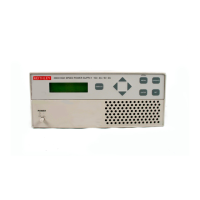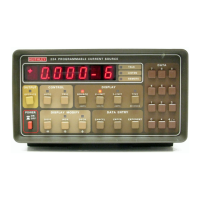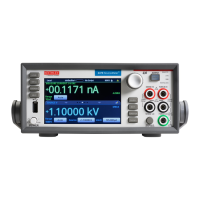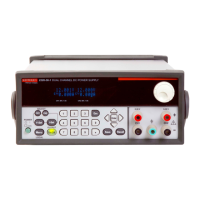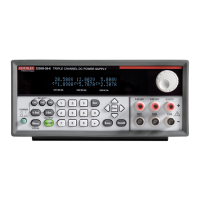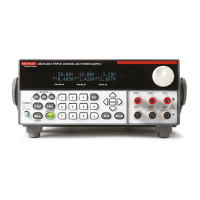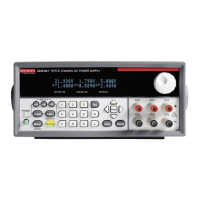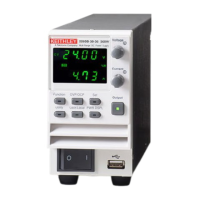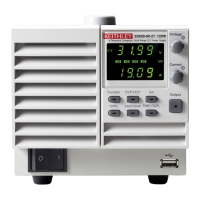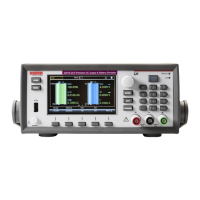Pulse Current Measurements 3-23
After any specified delay period expires, the instrument takes the number of readings speci-
fied by the average count command:
SENS[1]:PCUR:AVER <NRf> Battery
Channel (#1)
SENS2:PCUR:AVER <NRf> Ch
arger Channel (#2)
<NRf> = 1 to 5000 Digitize 1 to 5000 readings.
NOTE See “Pulse current digitization” on page 3-31 for a programming example. The
SENS:PCUR:TIME:DIG command can be used to set the digitize time for firmware
B10 and
later. See Table 3-2.
Pulse current step method
Use the pulse current step method to perform a series of different trigger level measurements
on the same trigger level range. This method is available on the battery channel through GPIB
operation — SENS:PCUR:STEP commands (see Table 3-2). Use this method to decrease the
time required to take a sequence of measurements. T
o use this method, properly set trigger level
steps, integration time, timeout setting, and trigger level range for the entire sequence of
measurements. Out of these settings, only trigger level may be set to a unique value for each
step — settings for integration time and trigger level range apply to
all steps in the measurement
sequence. Timeout has two settings — one for the first step and one for the remaining steps in
the sequence. Use an array command to trigger this method since an array of values are returned
(e.g., :READ[1]:ARRay?).
TLEV steps
TLEV (trigger level) steps are used to define the pulse sequence. A maximum of 20 steps may
be defined. These steps can be all UP steps, all DOWN steps, or a combination with the summa-
tion of UP and DOWN steps to measure not exceeding 20 (see Table 3-4). UP steps are always
measured before DOWN steps. To use the step method on
pulse forms with DOWN steps first,
special programming considerations can be taken. Refer to “Pulse sequences — down steps
first” on page 3-27.
NOTE Err
oneous readings will result if the current range is changed after the trigger level
range is selected (Model 2306-PJ only).
When using the Pulse current step method on the Model 2306-PJ, select the current range first
(either 5A or 500mA), then se
lect the trigger level range based on that current range before set-
ting the trigger level step values. For the 5A current range
, the trigger level range options are 5A,
1A, or 100mA full scale. For the 500mA range, the trigger level range full scale options are
500mA, 100mA, or 10mA. Current range and trigger level range needs to be specified before
step values because the step values are shared for all current range and trigger level range
options. Selecting the trigger level range is less critical than setting the current range because
once on a given current range you may change trigger level ranges and the step values will be
Test Equipment Depot - 800.517.8431 - 99 Washington Street Melrose, MA 02176
TestEquipmentDepot.com
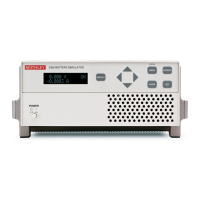
